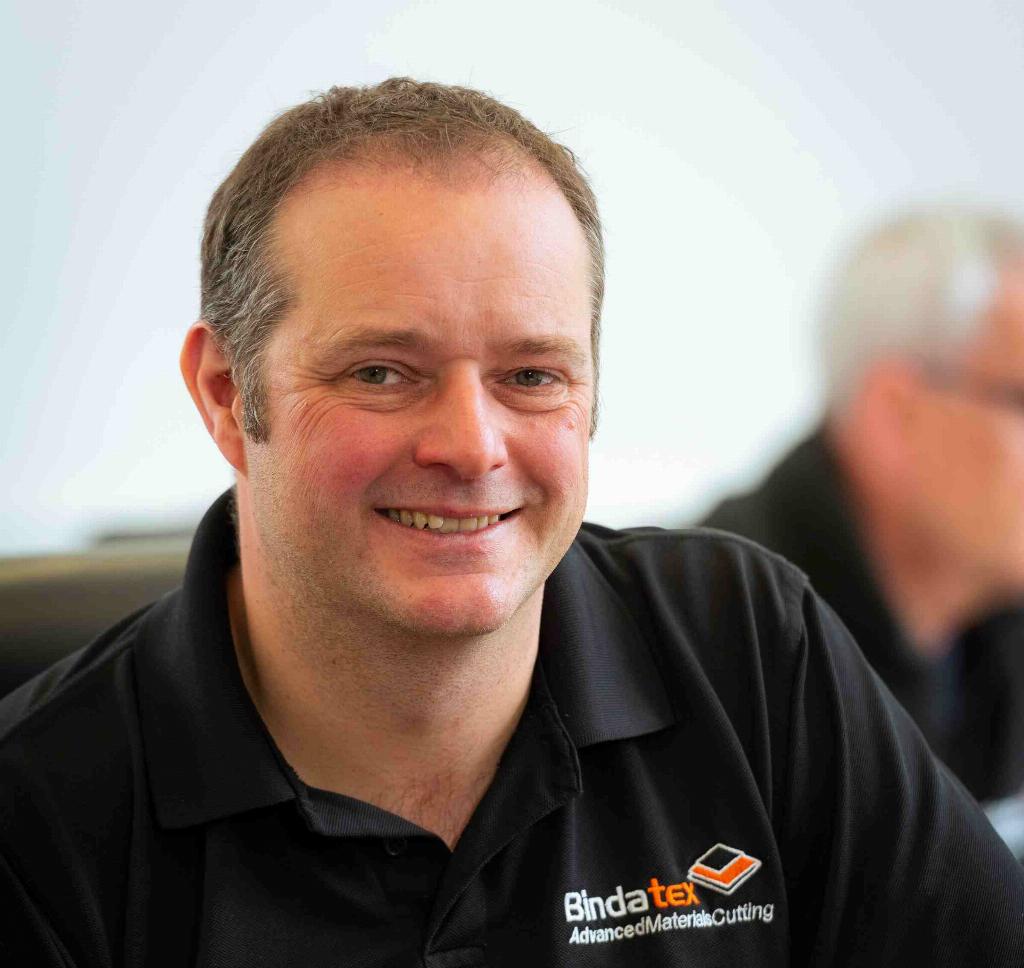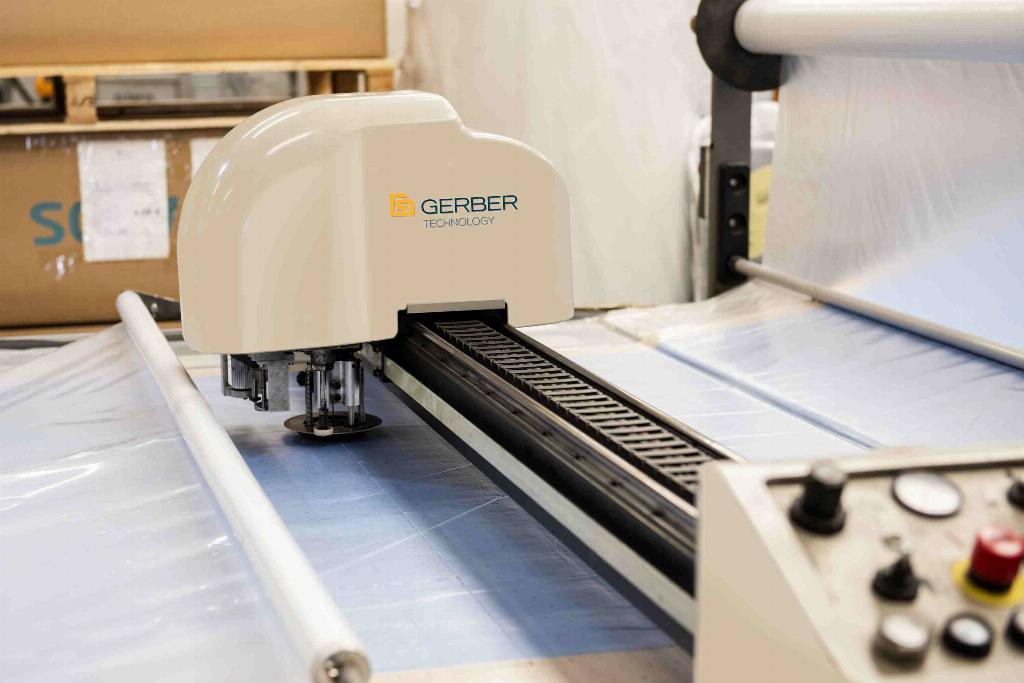Kitting for composites

Chris Lever, managing director of Bindatex, thinks kitting is the way forward for a refined and logical hand lay-up process, whilst addressing the hot topics of automation and reducing waste.
Kitting and cutting take time and can be a complex process if your kits are made up of multiple materials. You either need to invest a significant amount of labour or capital investment, but this does not guarantee a reduction in waste or errors.
With production ramping up, now is the time to rethink and refine, especially if you are still adhering to social distancing regulations or have fewer employees on-site at any one time. Outsourcing the processes which aren’t your speciality can allow you to optimise production space and improve productivity. And kitting specialists can invest in the latest technologies and practices – a case of sticking to the k(n)itting!
Here’s more on how cutting and kitting go hand-in-hand, the benefits of outsourced services and how it is being applied across a wide range of industries.
A kitting service in composites manufacturing involves components being collated into a pack which is then delivered to the customer ready for them to use within the assembly line. Each kit can also be given its own stock-keeping unit (SKU) for traceability.
It’s more than just packaging the items together, expert kitters work with their customers to develop a kit that allows for more efficient assemblies and to maximising the out-life of the materials. The longer a company works on preparation, the less time it has to develop a particular application. Cutting and kitting specialists minimise the amount of time on this part of the production process, freeing up more for the next stage of the production line, ultimately benefiting the end customer. Sorting the components at the point of manufacturer also reduces errors and contamination, allowing the assembly to run smoother.
Digital transformation
Before you can even think of kitting, the composites materials need to be cut and although digital transformation has taken over numerous factories, many composites manufacturers are still doing this manually. Adopting automated cutting machinery can be costly and a learning curve many fabricators do not have the luxury to spend time on.

At Bindatex, we were able to reduce turnaround times from weeks to days, with a 20% increase in productivity after adopting digital technology. Our recent acquisitions automate the entire cutting process, replacing hand-held cutters and templates. Using digital cut files instead of patterns ensure accuracy and a reduction in both time and material waste.
There are several clear reasons to outsource cutting to a company that uses the latest automated nesting software and regularly invest in digital transformation: cost savings, reduced labour and improved material utilisation.
Cost savings – Although the initial spending to embrace digital transformation can be high, once commissioned, the machines can offer lower operating costs and shorter set-up times which also translate to a more cost-efficient process.
Improved material utilisation – Expert cutters invest in the latest nesting software which plans cutting patterns most efficiently to reduce material wastage by up to 10%. Because they do this day in, day out the complexities of the process are fully understood, resulting in extremely precise results, error-free.
Although the large costs associated with the adoption of automation has been discussed, the learning curve can also be a risk. Digital transformation isn’t straightforward and training is required. To get the machinery commissioned is one thing, but ensuring employees have the appropriate training is another. This could take more time than you have spare and there will still be a learning curve for the operators long after the training has finished.
By outsourcing kitting services to your cutting provider, you will save time and labour by ensuring the manufacturing process starts effectively with all components sorted and ready for assembly. You’ll also receive all of the benefits of a digital factory and working with experts without the capital investment and time associated.
Utilising a cutting provider who can also kit reduces the risk of components going missing, contamination and damages. With less room for errors, you can focus on what you do best while increasing the efficiency of your in-house workforce.

Another key benefit of kitting services for a lean manufacturing environment means you can optimise production space. If parts are not kitted, it takes time and space to sort components. This space could be used for more essential production processes or abiding by social distancing guidelines.
By outsourcing, you can receive the components in a kit optimised exactly for your needs, causing no delay by sorting and grouping during the assembly process. All of the specialist work has been done.
Composites are increasingly used across a number of industries, and the complexities of these materials require a high degree of expertise to work with and expensive so it’s essential to get any process right the first time.
With the importance of medical technology in today's world, the benefits of combining cutting and kitting services from one provider greatly benefit the industry with reduced contamination risks and component damage.
For example, at Bindatex we were already an established healthcare supply chain partner, and we reconfigured our production last year to help with the urgent production of ventilators for the NHS at the height of the pandemic in March 2020. After the cutting process, we kitted the material ready for assembly into the ventilator, all in a managed clean environment with a turnaround of days due to the smaller chain of suppliers involved in the process.
Fast-paced advances
The aerospace and marine industries have already adopted automated cutting and kitting services due to the fast-paced developments. Many industries, especially due to the unprecedented times of late, do not have the capital investment readily available but that’s why there are companies like us ready to support during a critical, yet labour intensive part of the manufacturing process.
Not only will manufacturers who leverage outsourcing be able to work faster and more efficiently on their high-value process, but they’ll be able to harness the latest technologies cost-effectively through the experts that will greatly reduce material waste, free up factory space and minimise human error. Composite manufacturers benefiting from these solutions will be able to adjust more quickly to the ever-changing industry and increase their chance of success.
Bindatex has been cutting composites for over 15 years and is the only company in the UK that can undertake precision slitting to widths as low as 1mm which usually poses a challenge for composites cutting and, unlike many other converting companies, do not impose a minimum order. Specialising in the precision cutting of 'difficult to cut' materials to major thermoplastic and thermoset composite manufacturers and end-users across a wide range of industries.








